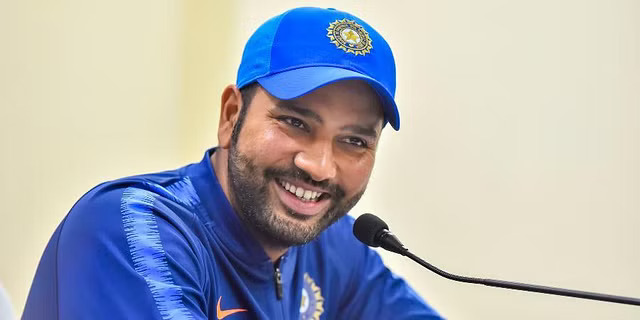
In the last one year, there seems to be something different about Rohit Sharma’s game. He is trying to embrace a different role – taking the ultra-aggressive route at the top of the order.
Rohit’s ODI strike rate since January 2020 is 103.72. He has also maintained a healthy average of 47.26. On the flip side, Rohit has only compiled two ODI hundreds in that period, with one of them coming in January 2020. It is safe to say that as the captain of the side, Rohit is looking to play with more intent at the top order of the order. When the captain lays the foundation stone, generally the rest of his teammates tend to follow him.
In the ongoing Asia Cup, he has walked the talk, composing quick-fire fifties in the Super Four games versus Pakistan and Sri Lanka. Just before the crucial encounter against Pakistan in Colombo, it seemed as if their pace bowlers, especially Shaheen Afridi, had a clear upper hand over Rohit. The India skipper, though, banished all his inner demons and crunched a 49-ball 56. It was Rohit who provided the ignition key by nonchalantly flicking Afridi into the stands.
In the very next game against Sri Lanka, Rohit accrued another vital hand of 53 off 48. On a turning track, Rohit played his cards right by targeting the pace bowlers. In the final analysis, his breezy fifty proved to be a decisive factor.
In that match, Rohit also applied logic plus gut feel on the field. Over three decades, at Premadasa, one has seen the ball doing a little more in the second innings of a D/N game. Rohit aptly gave the new ball to Jasprit Bumrah and Mohammed Siraj, his fast bowlers, instead of starting out with spinners on a track that was offering considerable assistance. Incidentally, the pace bowling duet ran through the heart of the Sri Lankan top order.
Axar Patel, the third spinner, was having an off day, but Rohit didn’t allow the game to drift as he brought Jadeja back into the attack. And just like that, Jadeja removed Dasun Shanaka on his first ball of his second spell. At that moment, one remembered this quote by Richie Benaud, the former Australian skipper: “Captaincy is 90 per cent luck and 10 per cent skill. But don’t try it without that 10 per cent.”
There was something more to Rohit’s captaincy. At the end of 34 overs, Dhananjaya de Silva and the plucky Dunith Wellalage were threatening to take the game away from the opposition. Rohit once more went for the jugular by reintroducing Hardik Pandya. Unlike in Jadeja’s case, Hardik didn’t get a wicket. However, he beat the edges of both Dhananjaya and Wellalage. And also forced Wellalage to edge a couple of them.
With Hardik maintaining pressure, Dhananjaya tried to chance his arm against Jadeja, but could only spoon a catch to Shubman Gill. The wicket was a result of two bowlers bowling in tandem. On a side note, just before Hardik returned to the attack, Rohit and Virat Kohli were having a rather long discussion. All those moves paid off as India clinched a hard-fought win.
It is true that most of Rohit’s moves were based on simple logic. But the major takeaway from his leadership skills was the intent to keep taking wickets. The same intent can be seen when he has a bat in hand. One has to wait and watch whether Rohit would be able to showcase his leadership skills in the World Cup, especially at crunch moments, where India have faltered in ICC tournaments over the last decade.